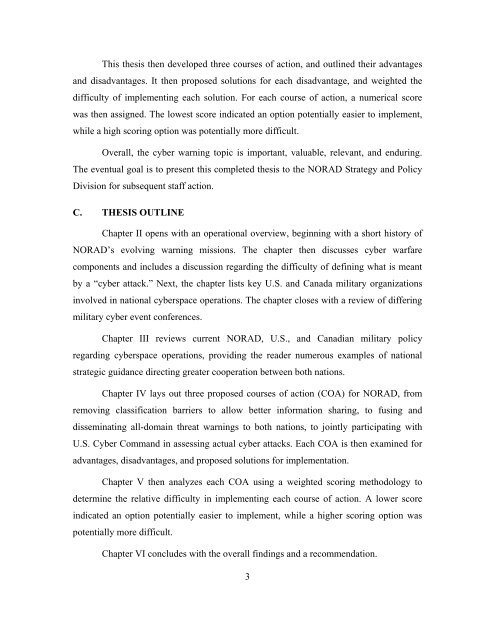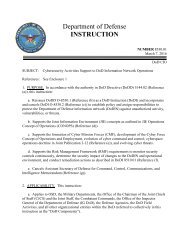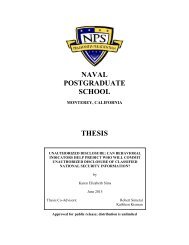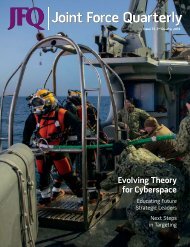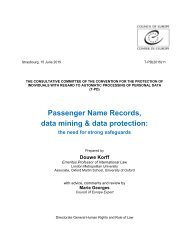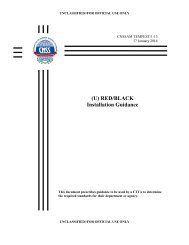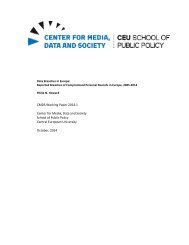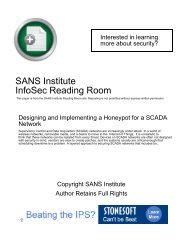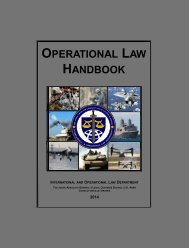SCHOOL THESIS
?view&did=788526
?view&did=788526
You also want an ePaper? Increase the reach of your titles
YUMPU automatically turns print PDFs into web optimized ePapers that Google loves.
This thesis then developed three courses of action, and outlined their advantages<br />
and disadvantages. It then proposed solutions for each disadvantage, and weighted the<br />
difficulty of implementing each solution. For each course of action, a numerical score<br />
was then assigned. The lowest score indicated an option potentially easier to implement,<br />
while a high scoring option was potentially more difficult.<br />
Overall, the cyber warning topic is important, valuable, relevant, and enduring.<br />
The eventual goal is to present this completed thesis to the NORAD Strategy and Policy<br />
Division for subsequent staff action.<br />
C. <strong>THESIS</strong> OUTLINE<br />
Chapter II opens with an operational overview, beginning with a short history of<br />
NORAD’s evolving warning missions. The chapter then discusses cyber warfare<br />
components and includes a discussion regarding the difficulty of defining what is meant<br />
by a “cyber attack.” Next, the chapter lists key U.S. and Canada military organizations<br />
involved in national cyberspace operations. The chapter closes with a review of differing<br />
military cyber event conferences.<br />
Chapter III reviews current NORAD, U.S., and Canadian military policy<br />
regarding cyberspace operations, providing the reader numerous examples of national<br />
strategic guidance directing greater cooperation between both nations.<br />
Chapter IV lays out three proposed courses of action (COA) for NORAD, from<br />
removing classification barriers to allow better information sharing, to fusing and<br />
disseminating all-domain threat warnings to both nations, to jointly participating with<br />
U.S. Cyber Command in assessing actual cyber attacks. Each COA is then examined for<br />
advantages, disadvantages, and proposed solutions for implementation.<br />
Chapter V then analyzes each COA using a weighted scoring methodology to<br />
determine the relative difficulty in implementing each course of action. A lower score<br />
indicated an option potentially easier to implement, while a higher scoring option was<br />
potentially more difficult.<br />
Chapter VI concludes with the overall findings and a recommendation.<br />
3


